UPDATED REPORT
— by Matthew Gilbert, Orcas Issues reporter —
The recent public disclosure of Coffelt Farm’s deteriorating infrastructure and its demand of the San Juan County Land Bank – which owns the land on which the farm operates – to finance critical improvements brought to the surface the desperate circumstances that have been plaguing its operations for some time. Coffelt Farm’s fate, after 10 years of what many would characterize as a well-intended but risky experiment in “publicly owned” agriculture, epitomizes the challenges of sustainable farming no matter the model, not just in this county but throughout the U.S.
Coffelt Farm began in 1950 as a privately-owned 200-acre enterprise owned by Vern Coffelt who was joined by his wife Sidney in the 1970s. Their primary focus was on growing healthy food for themselves and friends based on the principles of sustainable agriculture, grass-fed meat, and farmland preservation. As they began to realize that agricultural land on Orcas Island was under threat, they sought solutions to protect it, and in 1993 negotiated a conservation easement with the San Juan Preservation Trust to ensure that the farm would remain a farm after they were gone. In 2008 the land was sold to the Land Bank, a public institution approved by 60 percent of county voters in 1990 and funded by a one percent real estate excise tax. The mandate of the Land Bank is to “preserve in perpetuity areas in the county that have environmental, agricultural, aesthetic, cultural, scientific, historic, scenic or low-intensity recreational value and to protect existing and future sources of potable water.”
Although Vern and Sidney remained in charge until 2011, Coffelt Farm Stewards (a 501(c)(3) nonprofit) was established in 2009 with the goal of caring for the farm and continuing its commitment to sustainable and ethical farming practices and providing learning opportunities for both the public and aspiring farmers. Ruthie Dougherty, the Land Bank steward for Orcas island, was CFS’s first executive director; Joe Symons was its first board chair.
When the new arrangement began, it was assumed that the existing “business model” would be self-sustaining. As Land Bank director Lincoln Bormann tells it, “The vision was for a non-profit to continue a family-farming tradition and hopefully raise outside funds for operations and additional programs. Our hope was that with an established farm already in place with a two-bedroom house, sheep and hay barns, dairy, shop, farm stand, composting facility, equipment, animals, and no lease payments, it would be financially sustainable, especially with a nonprofit at the helm which has also the ability to fundraise and apply for grants.”
It took a few years to realize that running a farm of that complexity is expensive despite best efforts to fund it. “Pro bono” management, the support of a few passionate donors, modest grant monies, and project-specific support from the Land Bank kept the tractor wheels turning but masked underlying capital and maintenance needs that were necessary for long-term sustainability and that would allow farm staff to do what it does best: farm efficiently with reliable staffing and up-do-date facilities.
As one source noted, “one of the main challenges every year has been trying to rise above the ‘barely squeaking by’ profit margin. Farm income plus donations barely cover operating expenses. This leaves little money for infrastructure or equipment upgrades. It also leaves little money for adequate pay for hard work. This is nothing new to any farmer.” Add to that the need to pay for an executive director (not always accomplished) and the challenge of three separate but conjoined entities trying to make good decisions under duress. Forgive the pun, but all of these chickens have now come home to roost.
Records show that since 2009, the LB has invested about $240K in the farm, half in payroll and the other half in various services and maintenance. The case for more substantial infrastructure investment has been made for a number of years, according to sources, and was formally emphasized in a letter to the Land Bank dated May 26, 2016, from Charly Robinson, then executive director of CFS, and Symons. In it they write that “under present conditions, CFS is unable to guarantee that we can continue to operate the farm on a break-even basis. There are many reasons for this inability, some historical, some contemporary. The latter involve the fact that our dairy has yet to become legally certified (or certifiable), the lack of worker housing to enable us to employ sufficient farmhands to get the work done, the lack of facilities to carry out revenue-generating activities such as agricultural training, and the prevailing view among our customers that as a publicly-owned property, we are deemed a poor prospect for charitable giving. This means that in order for us to sign off on the LoA (Letter of Agreement), some very fundamental changes will need to be made . . .”
The Land Bank will extend the length of its regularly scheduled monthly meeting this coming Friday the 15th to accommodate public comment on the future of this Orcas Island institution. It takes place at the Mullis Community Senior Center in Friday Harbor (589 Nash St.) starting at 8:30 a.m.
The concerns of worker housing in particular were never addressed as the entire board and ED were abruptly replaced by a new board led by Terry Williams and Wendy Thomas, who lasted six months. A patchwork of partial governance solutions followed until the spring of 2018 when long-time farm supporters Betty Corbett and Bill Wulff were asked to join the CFS board and help figure out how to keep the farm afloat. After a year of evaluation, which included securing a lease with the Land Bank and bringing the farm into compliance on several fronts, they put a number on those “fundamental changes”: $1.25M, the bulk of which ($950K) would be used for a multi-purpose facility that includes farmworker housing. The request was delivered along with an ultimatum: Without this additional investment – and soon – Coffelt Farm will cease to exist. The specter of this raises a number of critical questions:
- What is the Land Bank’s fiduciary responsibility to ensure the sustainability of this uniquely diversified agricultural property? (It does have other agricultural lands in its portfolio, but they are mostly single-use and privately-owned with long-term leases and much lower maintenance needs.)
- Is this a legitimately sanctioned use of taxpayer monies?
- What assurances can (or should) be made that the farm can be self-supporting? Does the current revenue model need revision?
- Is there a governance and management structure that makes sense under these exceptional circumstances?
- What will be lost should the farm go under?
- More deeply and philosophically, how important is the role of local agriculture in serving a community’s well-being?
The Agricultural Resource Committee (ARC), a 15-member citizen advisory group tasked with providing recommendations to the Economic Development Element of the County’s Comprehensive Plan, sent a letter to the Land Bank that did not take sides but instead emphasized that “We are committed to supporting the acquisition and stewardship of agricultural lands. The Coffelt Farm is an important project and we are rooting for the stability of the CFS and the future success of the project.” Among its many recommendations to the County that encourage such an outcome are
- Encourage agricultural enterprises and activities in order to enhance agricultural viability and create a thriving local food economy.
- Support the education, training, and counseling of county residents toward internships in agriculture to supplement and replace an aging talent pool.
- Foster a thriving local food economy by investing resources in the development of supporting infrastructure.
- Recognize the ecosystem services performed by healthy soil as fundamental and essential county assets and support regenerative stewardship activities.
A “petition of support” posted on the CFS website has been signed by nearly 30 farms. The list of community member signers is approaching 800.
Charly Robinson, who worked as a volunteer on the farm for five years years before stepping in as executive director, acknowledged the challenge of creating “a partnership between a public entity (the Land Bank) and a nonprofit organization that is trying to create a product, preserve land, and provide education. Almost no one else in the country is doing this. [And yet] preserving farming traditions and knowledge is vital for our community. In just two generations, much of the skills required to produce food in this country have been lost.”
Kaj Enderlein, owner of Kaj-Dawg Farm which is the host farm for Orcas Community Participatory Agriculture (of which I’m a member), describes Coffelt Farm as “an asset held in the Commons, like Turtleback Mountain. It provides the community with multiple dividends, many of which are not accounted for in the dire conversations describing the farm’s health and value through the limited lens of a single bottom line – the P&L. There are enormous social/community and ecological benefits. We are also failing to perceive ourselves as co-owners, although a thoughtful re-examination of the Coffelt Farm Vision Statement might be useful.”
In the end, the aspirational vision of “community supported” agriculture that fueled the original agreement between Coffelt Farm and the Land Bank has not been able to overcome the arduous challenges of any local, organic, family farm whether here or elsewhere in the world of Big Farma. Corbett and Wulff are stepping down after their one-year commitment, “grateful for the opportunity we’ve had to do our best to save this priceless county treasure.” And if a solution isn’t found, “We’ll be deeply disappointed, but we won’t be angry,” added Corbett. CFS’s new executive director, Kate Mikulak, believes that “if board member and staff time are diverted to the needs of our mission as a nonprofit farm and away from constant infrastructure problems on the ground, we have great potential to flourish as a cultural institution connecting and showcasing the island’s agricultural heritage.” There’s now a new farm manager, Stephanie Casey, a new board chair, Kathy Morris, and a much clearer understanding of what is needed to go forward. But will all that be enough?
Corrections:
It was the Land Bank that purchased the original conservation easement from Coffelt Farm in 1995 (for $230k). When the decision was made to purchase the property outright (for an additional $1.175m) so that it could remain viable as a farm, a new conservation easement was drafted and donated to the San Juan Preservation Trust.
Terry (not Teri) Williams had been on the Coffelt Farm Stewards board for three years before taking over as interim Chair for six months while the board reorganized.
**If you are reading theOrcasonian for free, thank your fellow islanders. If you would like to support theOrcasonian CLICK HERE to set your modestly-priced, voluntary subscription. Otherwise, no worries; we’re happy to share with you.**


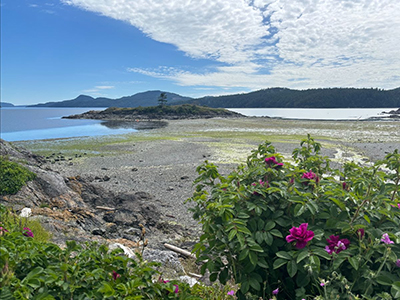
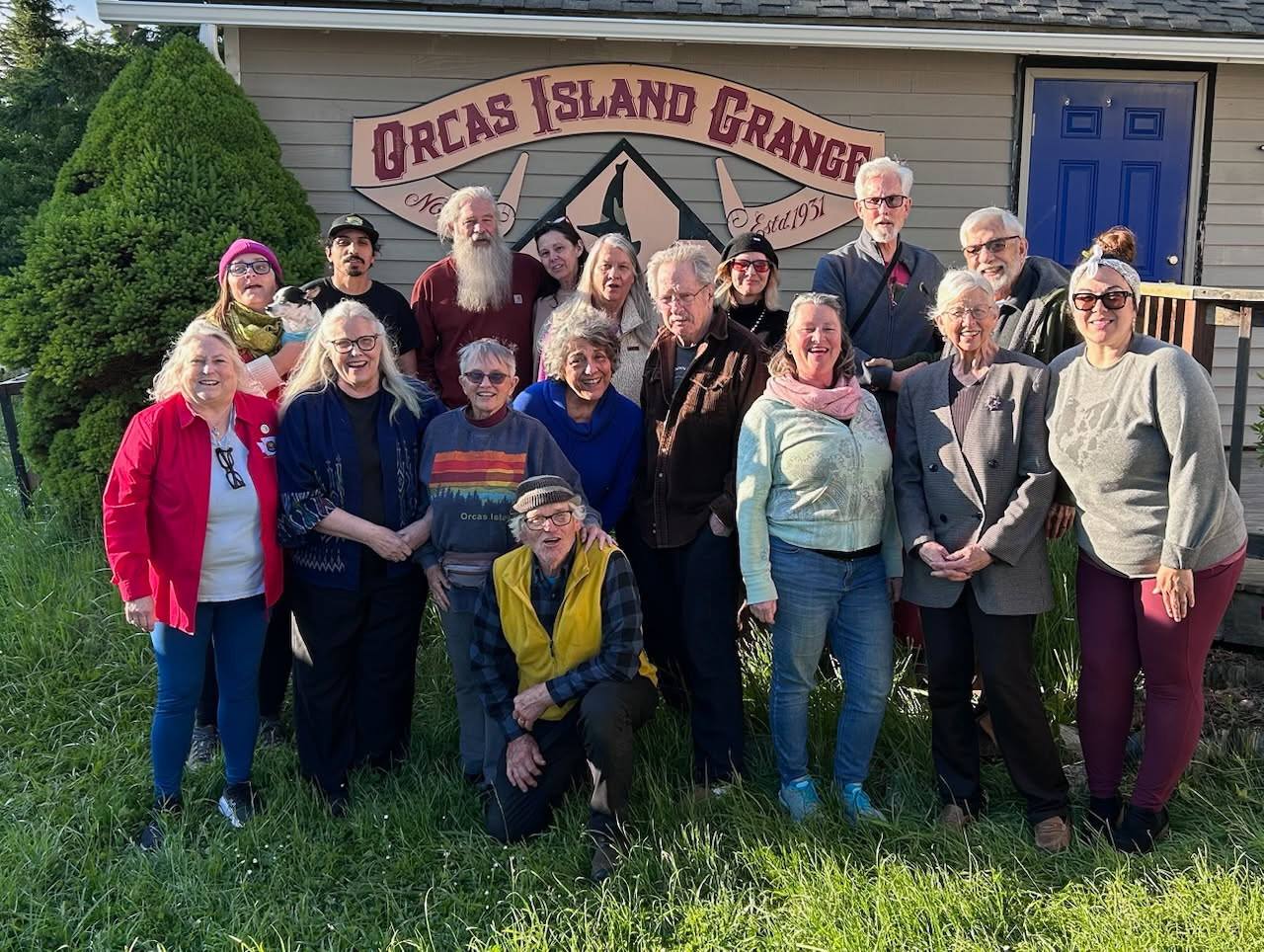
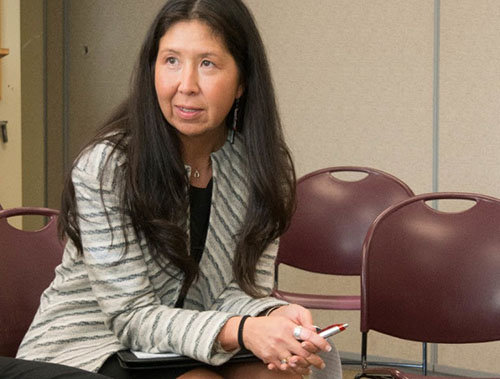
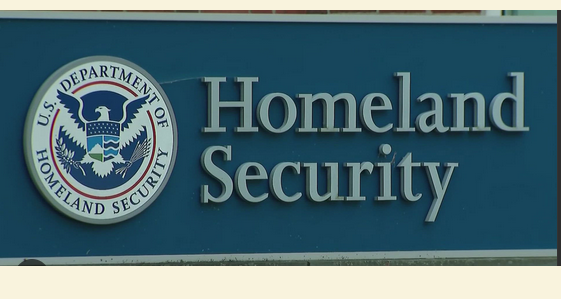
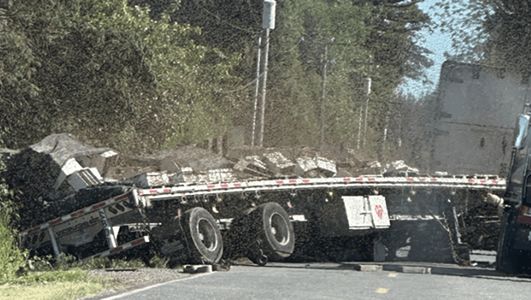
An excellent summary! Great journalism!
Please go to https://www.coffeltfarm.org/support to add your name in support of the farm. Our community needs Coffelt Farm!
Yes, such good reading and information (don’t forget to support Orcas Issues in this overriding mission!).
CFS is a brave vision. The Land Bank’s conservation easement will provide permanent protection of the property if it is allowed to remain in effect under this duress. Safeguarding the long-term ownership and operation of the farm may be challenging the Land Bank’s charter and capacity.
Excellent reporting Matthew. I agree that we should explore ways to support and sustain Coffelt Farm, but I’d like to raise a point of concern:
Is it wise to invest nearly $1m of public funding in an entity that has had so much turnover in it’s leadership over the past 4 years? Just allocating the funding does not a successful project make, and while I agree that the need has been demonstrated, as an outsider looking in I’m not convinced an organization which has gone through so many board and executive director changes in such a short time can be trusted to see the project through. This seems to speak to some internal dysfunction, and until the organizational leadership establishes some sort of track record I think the Land Bank would do well to proceed with caution on funding such a large and complex project as the multi use building being proposed.
I’m not really advocating either way, just raising the question. I do think the other smaller capital needs should be addressed post haste.
I hope Michael Pollan’s “The Omnivore’s Dilemma” is required reading for CFS board members, particularly the section on Polyface Farm…
As incoming chair, I would like to add my comments since I was busy with my own farm before the deadline of this article.
My immediate priority is to secure a plan from the Land bank for farm worker housing. Previous housing supplied by the Land Bank was a rat infested travel trailer. Also a plan for needed upgrades to farm structures including the water system. We are not looking for a hand out from the Land bank. We want them to invest needed capital to make capital improvements on their land . All things within the range of normal for a land owner.
I have read Omnivore Dilemma, studied soil health with Elaine Ingham, met Temple Grandin twice!, have attend the Country Living expo for years, read Dirt to Soil by Gabe Brown, etc. I am excited about the future for Coffelt Farm and our potential to positively impact farming in all of San Juan County
It might be of interest to know exactly where the Land Bank’s funding stands after what must have been banner years for the tax that supports it.
It’s not at all clear to me that the San Juan County Land Bank should be in the business of running a farm/agriculture school on property the Land Bank owns. Such a school might be better served by donating it to an institution that runs schools, perhaps Skagit Valley College or Washington State University, and let them operate the farm. That could be a difficult donation as sometimes the most expensive gifts are those received for free.
If, on the other hand, the 827 ‘Community Members’ in support of the farm would like to vote with their pocket book and it turns out to be true that $1,250,000 is all that is needed to repair the farm in its entirety: each person can write a presumably tax-deductible check for $1,512 to the 501(c)(3).
From the above article, it appears the farm has not been a self-sustaining operation for years and nothing in the article suggests this will change going forward with or without an injection of funds to make capital improvements.
Thank you, Matthew, for laying out Coffelt Farm’s history and issues of so clearly for the public benefit.
It seems to me that there is a critical tension between “preservation” (the Land Bank’s mission) and “conservation.” Here’s a link to some useful definitions of each:
https://www.ecoca.ro/meteo/tutorial/Sustainability/Older/Conservation_and_Preservation.html
Unfortunately, the county itself conflates and confuses the two terms throughout the ordnance that governs the Land Bank:
https://sjclandbank.org/wp-content/uploads/2018/03/SanJuanCounty-Code-2.120-Land-Bank.pdf
Perhaps a way forward for the County, Land Bank, Coffelt Farm and future Land Bank properties is to revise/clarify/update the ordnance. Doing so might open the door to re-negotiating the original agreement between the Land Bank and Coffelt Farm Stewards so that improvements of the property can actually be made with public funds – rather than just “preserving” what’s already there — that includes adequate housing, among other essential services.
Wonderful reporting, Matthew. I was involved in the early days of Coffelt Farm Stewards and have retained a deep interest in its mission and operations. I think you have captured the essence of the farm’s multiple dilemmas and great potential. I hope the community debate that the current Board has ignited by “going public” will result in actions that finally set the farm on a stable foundation. It is a living island treasure.
Here’s a link to an interesting article that addresses the economic sustainability of various farming practices and in my mind raises the question as to whether the CFS model is too land intensive to be economically feasible: https://ourworldindata.org/agricultural-land-by-global-diets. Would a model with less emphasis on animal husbandry and more on producing corps that generate a greater yield per acre be more sustainable in the long run?
In 2018, Coffelt Farm was my home. I resided in a small living space by the farm stand. I saw 5 farmhands come and go during my time. Each one lived in a farm provided trailer or brought their own mobile type structures (as there was only my space and the one trailer available). All of these folks were 20-something’s ready to work hard and eager to learn. In freezing temperatures, no farmhand or market gardener living structures can get water. Space heaters are adequate for heating such small spaces, but as many Orcas residents know, power outages are common. We often desired a place to discuss farm-goings on or just relax after a busy day of gardening, feeding, milking and so on. I believe that employee turnover would likely reduce if there was a common building for employees to live, shower, eat, stay warm and hydrated, and LEARN! With proper infrastructure in place, it will lend to the mission that the farm has always desired to carry out: educating, improving the land, and providing for a small-island community.
I am curious as to the cost of running Coffelt Farm in comparison to other farms that are privately owned ?
I suggest you ask the people who live there, and work there, what they think the answers to keeping the farm viable are.
I grew up on a farm. I still own farmland. Farming has dramatically changed over the last few decades to become much more efficient. Today, one person on a grain farm can do the work that would have taken five people to do 20 years ago. The equipment is larger. The number of acres farmed per person is significantly more. Technology has taken a much larger role. Genetics have changed. Across most of America there are two responses to that change. Either you become a part of the evolution of ag meaning that you buy new equipment that does more, requiring you to farm more acres to pay for it or you decide that you don’t like change and refuse to participate. You watch as your neighbors produce more at a cost below what you can do with your old equipment and fewer acres. As time goes on, it becomes increasingly difficult, if not impossible, to catch up. Eventually you or the bank will sell the land to someone that can operate it at a profit.
It isn’t just Coffelt farm that cannot continue to operate as it used to. Virtually no farm in America operates the same way it did just twenty years ago. Housing is not just a problem on Orcas, it is a problem across much of America. Most employers in rural America have to buy the housing for their employees. Many farmers are also landlords now. Not because they want to be but because they have to be.
We may have nostalgic ideas that a farm should be 4 people, 12 cows, 585 chickens, 16 pigs and 90 sheep and be economically viable. But one person on a typical midwest feedlot can produce 500 cows. Another one person on a typical farm can produce 3,000 chickens. Compare the labor cost of the two operations. They are in different universes. Coffelt farm isn’t viable as currently operated. The people that work there are wonderful hard-working people, but so are the people that work on a midwest farm and produce far more product for the same or lesser labor cost. Coffelt will either have to change what and how it does it or someone will have to decide that they will heavily subsidize nostalgia. There are a very large number of farmers that would love for someone to pay them enough for the product they produce so they didn’t have to change.
Steve, to my knowledge, Coffelt Farm never aspired to be a Factory Farm. That is what you describe as a successful model. What you describe is the torture and torment of farm animals by Big-Arga. There is no comparison between the Coffelt Farm situation and the factory farms of the mid-west. Please don’t compare the two different entities.
Great journalism, Matthew – and many good questions raised.
I don’t want to see Coffelt Farms be left to die without everything being tried. Agree with those who believe it belongs to the commons, and stands for something we want to preserve; as well as sending messages to other farms that they are of value to us. Surely as a community we can put our heads and hearts together and think of some outside-the-box solutions, and not put all our apples in one basket? Foundations? Grants? Good old fashioned barn raising? Materials donations (tax writeoffs) ETC
The various posts that follow Matthew’s great article demonstrate the need to discuss WHY we preserve ag lands. It isn’t about efficencies in food production – if it were, we’d just watch the Island’s farm land being subdivided while we drive to the Market to pick up eggs and meat from the mainland. The rural, agricultural “look and feel” of our Island brought many of us here, and probably benefits our tourist economy far more than our ag economy. The voters’ decision to preserve ag lands by setting up the Land Bank, implied our community’s desire to preserve local agriculture. Now the Land Bank needs to “do what it takes” to make it work!